Bloodborne Review
Chances are, you might already know if Bloodborne is the sort of game you’d enjoy. Created by the team at From Software, their latest release is a dark and menacing beast that will chew up unsuspecting players and spit them out, without so much as a warning. Bloodborne is the newest entry in the “Souls” franchise, so players can expect a lot of frustration, repetition, and eventually the joy of victory. The notorious difficulty is still the main gameplay attraction, however there is more here than meets the eye. If you’ve never tried the Souls games, or didn’t enjoy the time you spent with them, Bloodborne is a different animal that may change your mind. With a more action-oriented approach, this could be the game that turns you into a fan.
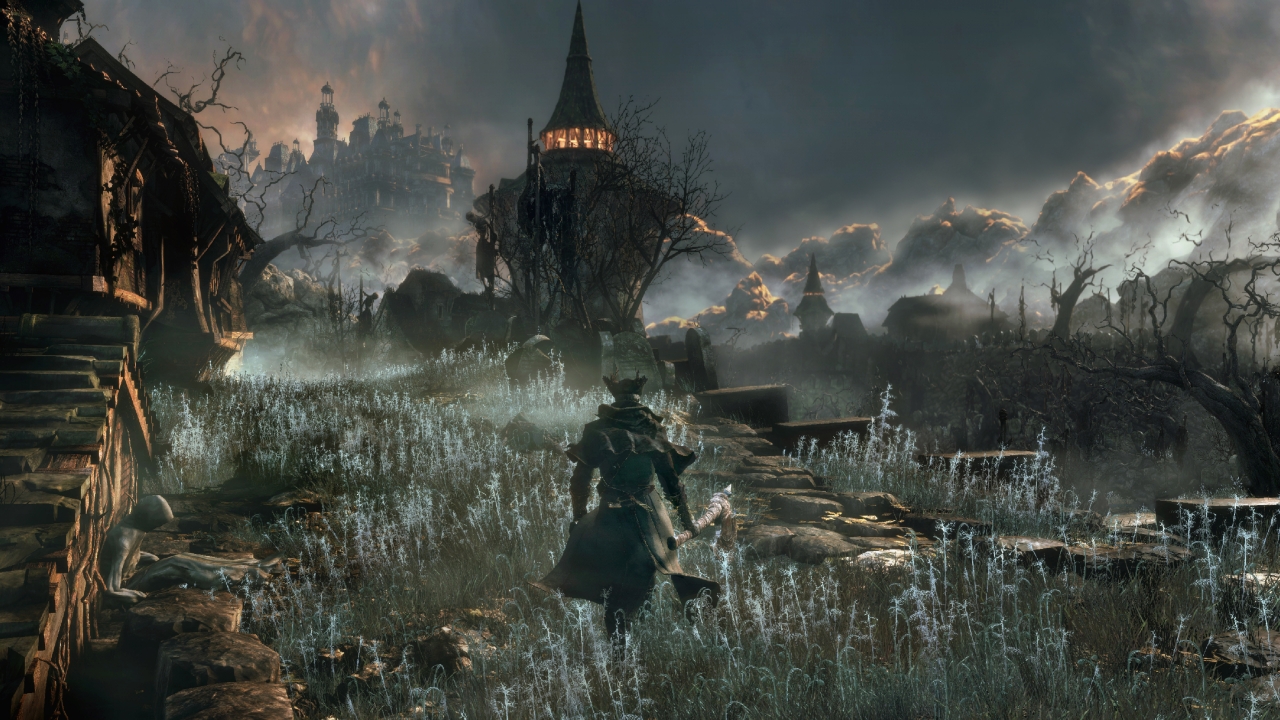
Players assume the role of a traveler that arrives in the city of Yharnam. It is quickly discovered that a horrible event has occurred here, and the whole town has been infected with some kind of illness that transforms men into creatures, and also spawned all kinds of monstrosities. Players will navigate this city and its outskirts in search of a cure, while also unraveling the origins of the disease and other secrets of the local populace. To put it bluntly, Bloodborne is not a game to play for its clear, engaging narrative. Like the Souls games before it, storytelling here is extremely minimalistic, convoluted, and not very engaging. Thankfully, other aspects of the experience more than make up for a lack of a cohesive plot; still, the dedicated and lore-obsessed fans will likely make sense of it all.
Regardless of your history with the Souls games, Bloodborne is a sequel that tweaks core gameplay mechanics enough to produce a wholly different experience. It’s much more of an action game with RPG elements, instead of the other way around as its predecessors were. But you still begin as we always must, by customizing your character and choosing an origin story, which determines your starting level and how many attribute points are allocated to the stat categories of Vitality, Endurance, Strength, Skill, Bloodtinge and Arcane. Most are self explanatory; Vitality governs your health pool, and Endurance determines how many dodges and attacks you can perform in a row. Strength and Skill are attributes that define how much damage you deal with various weapons. Bloodtinge governs the power of weapons that use Quicksilver Bullets, while Arcane is related to magical abilities. You also get a set of Blood Echoes to start with.
These Echoes function in exactly the same way as Souls in the past games. It’s the game’s only currency – used to level up, shop for items, upgrade your weapons, and so on. Death is a frequent occurrence, and each time your Echoes will be lost entirely, lest you go back to the spot where you were overwhelmed and recover them. Sometimes, they will even be picked up by a nearby enemy that you’ll need to kill to recover them. The high risk mechanic of collecting a lot of Echoes will weigh heavily on your mind as you carry on deeper into the game’s dark, twisted world.
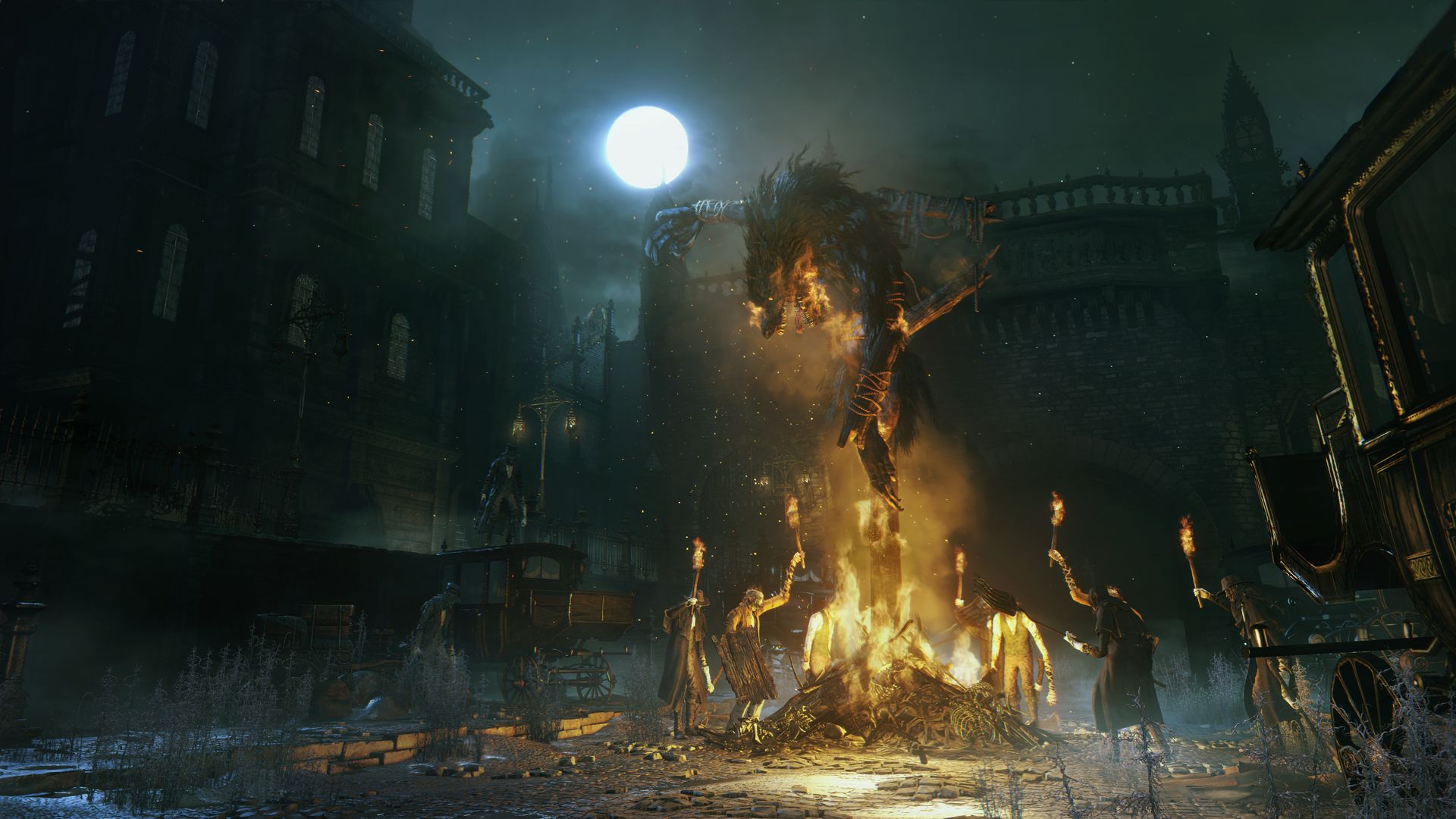
And what a world it is. Stepping out for the first time, the dark and atmospheric Gothic streets of Yharnam are instantly oppressing. Dangers feel like they lurk around every corner, even if there is no enemy in sight. The environments are relatively small, however they offer a multitude of directions to explore, all interconnecting in ingenious ways. Multi-level, multipath zone design is stronger than ever in Bloodborne, prompting an intoxicating desire for exploration, finding shortcuts, secrets, and new areas. There’s no map to fall back on, so you’ll be drawing out paths in your memory and become intimately familiar with the streets of the city, and later the surrounding areas. From the underground tunnels to the deep forests, the levels in Bloodborne are all interconnected with rare teleportation lamps.
You use these lamps to return to Hunter’s Dream, which acts as the central hub of the game and is separate from the main world. Here, you can level up or embed new gems into your weapons for better attributes. This is also where you trade and barter with a merchant, and can teleport to any of the lamps you’ve lit back in the main game. It’s a system that works perhaps slightly better than teleporting between bonfires.
As mentioned earlier, Bloodborne is much more of an action focused experience, and this is reflected in the weapon and armor selection. There are very few weapons in the game – less than 30, a number that action fans would be happy with, but RPG players would scoff at. Similarly limited is the armor selection, and you’ll be finding all armor as a set rather than individual pieces. However, the developers clearly focused on quality and variety over quantity. Each weapon – from a sword and hammer to a cane – performs differently and has its own gameplay style and move set. The longsword is slower and has a limited range but can dish out damage with good pace; the hammer does great area of effect damage against multiple enemies, and the cane may seem like a poor choice at first – that is until you discover its transformation.
All weapons in the game are called trick weapons, meaning they can transform between two modes. The cane, for example, transforms into a whip that gives you greater flexibility and range. The starting weapons such as the saw cleaver can be used in its short form, or extended for much greater range and damage but slower attack. As you might imagine, this gives players an incredible amount of options to find the weapon that best fits their play style. There is a durability mechanic, but it feels like an afterthought; your weapons degrade very slowly and are cheap to repair. Weapons also have varying scalability, meaning some will do more damage if you have a high attribute rating in skill or strength. You can upgrade weapons with embeddable and swappable gems that provide passive buffs, as well as fortify them with shards that permanently increase the level and damage output.
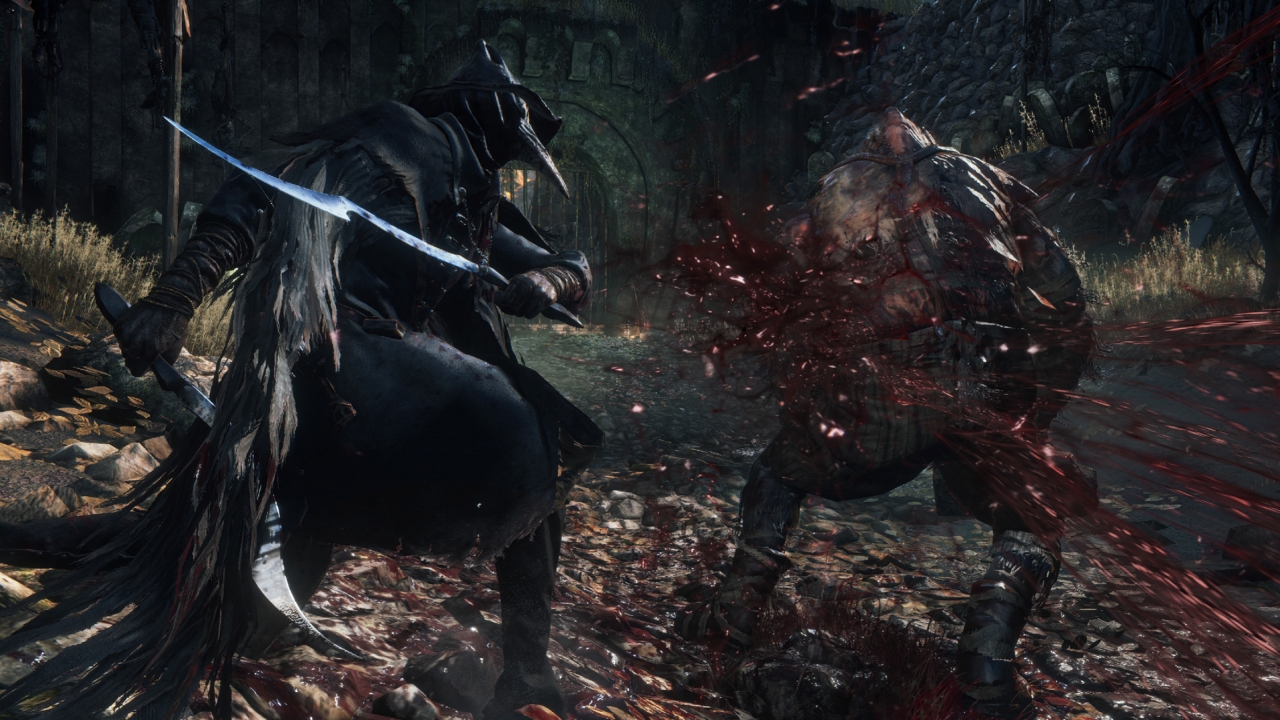
In addition to the flexibility offered by trick weapons (it’s viable to complete the whole game with the starting weapons), shields are no more. This is an action game, remember? Instead, when not using their weapons in two-handed mode, players have a pistol to use. This pistol uses Quicksilver Bullets and behaves just as any rifle would, doing small damage to enemies from afar and helping you pull apart mobs with aggro. But more importantly, it also acts as your tool to parry attacks. Timing your shot well will stun your foe, leaving them open to a visceral attack from your main weapon.
The first few hours of the game are probably the roughest. Getting used to the controls, dodging and side-stepping enemy attacks, and learning to recognize the windows of opportunity to land blows – all of these elements take time to learn. You can’t leave the starting area of the game until you’ve had a chance to master these mechanics enough to defeat the first couple of bosses. And that’s just fine. The controls are tight and responsive, and most of the deaths you’ll experience will be due to your own lack of patience, reaction time, or being under-leveled; only occasionally the unwieldy camera will be to blame. You’ll learn that losing your Echoes is not the end of the world, and if you made it to a location once, you can do it again and retrieve them.
As in previous games, the enemies respawn and can be farmed for Echoes and items, and the environments are static; any shortcuts you open and items you collect will remain intact, even if you die. Because Bloodborne is less of an RPG, the only things that enemies will drop are health refills and bullets for your pistol, as well as items such as Blood Shards for weapon upgrades or Molotovs. Later on in the game you’ll also be able to use runes, which act like rings and give you passive buffs.
With no shield, the action in Bloodborne is decisively more frantic and agile than the past entries. There is a new helpful mechanic that allows you regain some of the health you just lost by landing a few hits on the enemy immediately, as retaliation. Hit and run tactics are not only encouraged, they are required. You can lock-on to enemies, which turns your dodge/roll into a sidestep instead, limiting mobility but helping you more successfully avoid incoming blows. The usage of your pistol is also key to stun-locking, helping you dish out huge damage against tougher foes.
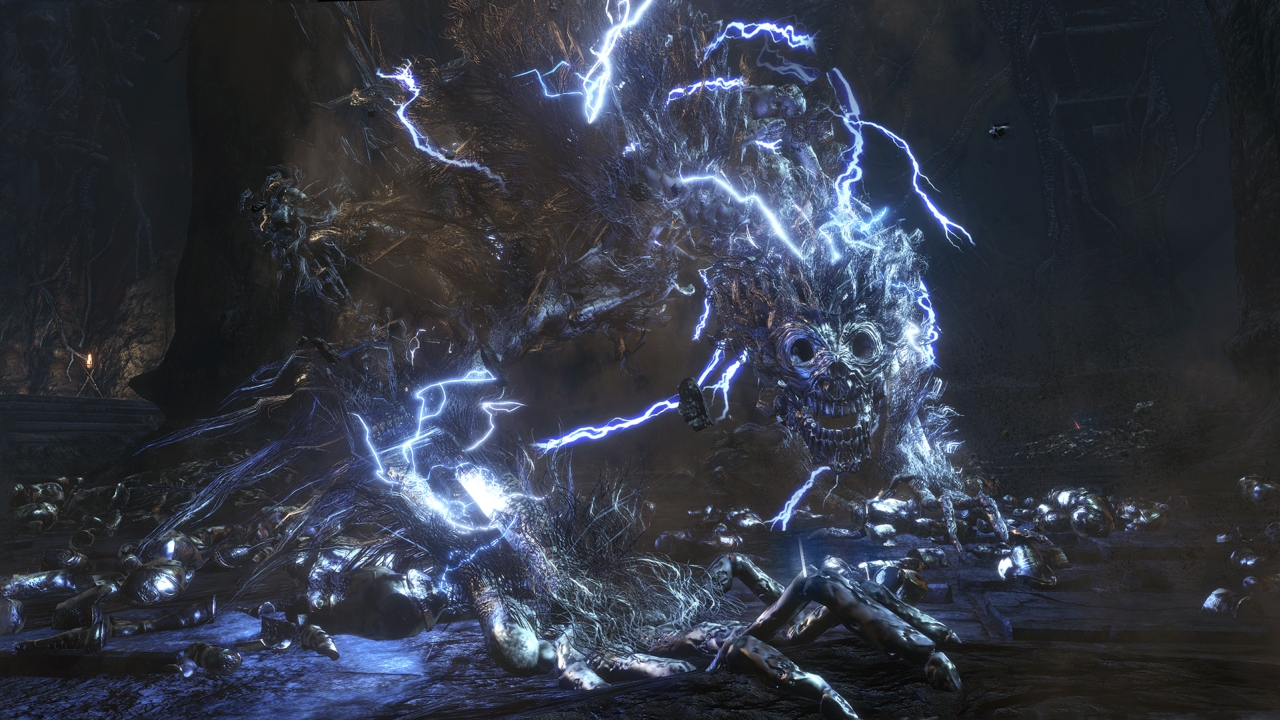
Thanks to the variety of play styles afforded by the weapon mechanics, the gameplay shines despite the perceived difficulty. Unlike perhaps in the past Souls games, dying in Bloodborne is still frustrating, but it always feels like your fault. You didn’t dodge fast enough, in the wrong direction, or simply got greedy or careless with your attacks. It’s never because the game is cheap or because the controls failed to detect your input. The action is visceral, with each attack carrying a satisfying feeling of impact, and losing half your healthbar in one blow will put your nerves on edge.
But at least you’ll be comfortable knowing that there are no cheap deaths – there are no environmental traps, no innocent looking chests that turn out to be monsters. Those elements added little to the already frustrating experience in the past Souls games, and it’s nice to see them gone. Not to mention, this design choice fits directly into the game’s more aggressive approach. Enemies still have the habit of taking huge chunks of your health bar, and bosses even more so. But with patience and awareness, Bloodborne is not as jarringly difficult as its advertising materials would have you believe.
Where all players will probably struggle is during boss fights. After the somewhat disappointing selection of key foes in Dark Souls 2, Bloodborne’s monstrosities are both refreshing and highly diverse. Each enemy not only looks and feels unique, but they vary greatly in gameplay. You will fight beasts three times your size that are relentless in their attacks, pouncing and swiping mercilessly at your health. You will also fight an angry old witch that becomes invisible, or an enemy that closely resembles a human Hunter just like yourself with access to similar attacks and weapons. Boss encounters in the game are as memorable as they are challenging, with each fight not only playing out differently from the others, but the bosses usually go through stages during the encounter that further diversify the action. These fights will often take multiple attempts; players will need to learn and recognize attack patterns, or come prepared with special items such as antidotes to combat foes that infect you with poison. But if all else fails, a hunter is never alone, and this brings us to the multiplayer aspects of the game.
Being able to play with others ties into the second currency in the game – Insight. This mysterious bargaining currency is rare and can only be acquired by finding pieces of Madman’s Knowledge in the world, as well as encountering and defeating bosses. After you acquire a Beckoning Bell, you may use one point of Insight to ring it, which begins cooperative matchmaking. It’s like sending out a request for help, and hoping that another player is offering their services. Besides being a bartering tool, Insight also appears to be a game-changing item. The more Insight you have, the greater changes take place in the world – enemies change their behavior, become more dangerous, and even gain new abilities. It’s an intriguing and mysterious mechanic that only the toughest of Hunters will utilize.
Once you’ve reached 10 points of Insight, a new merchant appears in Hunter’s Dream that sells rare items for Insight instead of Blood Echoes. Here, you may purchase a Sinister Bell which lets you invade other players’ worlds, and a Small Resonant bell that allows you to respond to others’ requests for help. It’s a system that will be familiar to Souls veterans. Anytime you’re struggling with a boss fight, it’s great relief to be able to call up to two other Hunters to assist. Players can set a password on their game, to ensure that only friends join; otherwise anyone in the physical area who has rung the Small Resonant Bell will be joining your world. With the help of cooperators, the game’s most challenging battles become more manageable. And if you ‘re helping others, you get the benefit of extra Echoes as well as the satisfaction of beating bosses for a second time, with likely better gear than you had during the encounter in your own world. The co-op session forcibly ends when a boss is defeated.
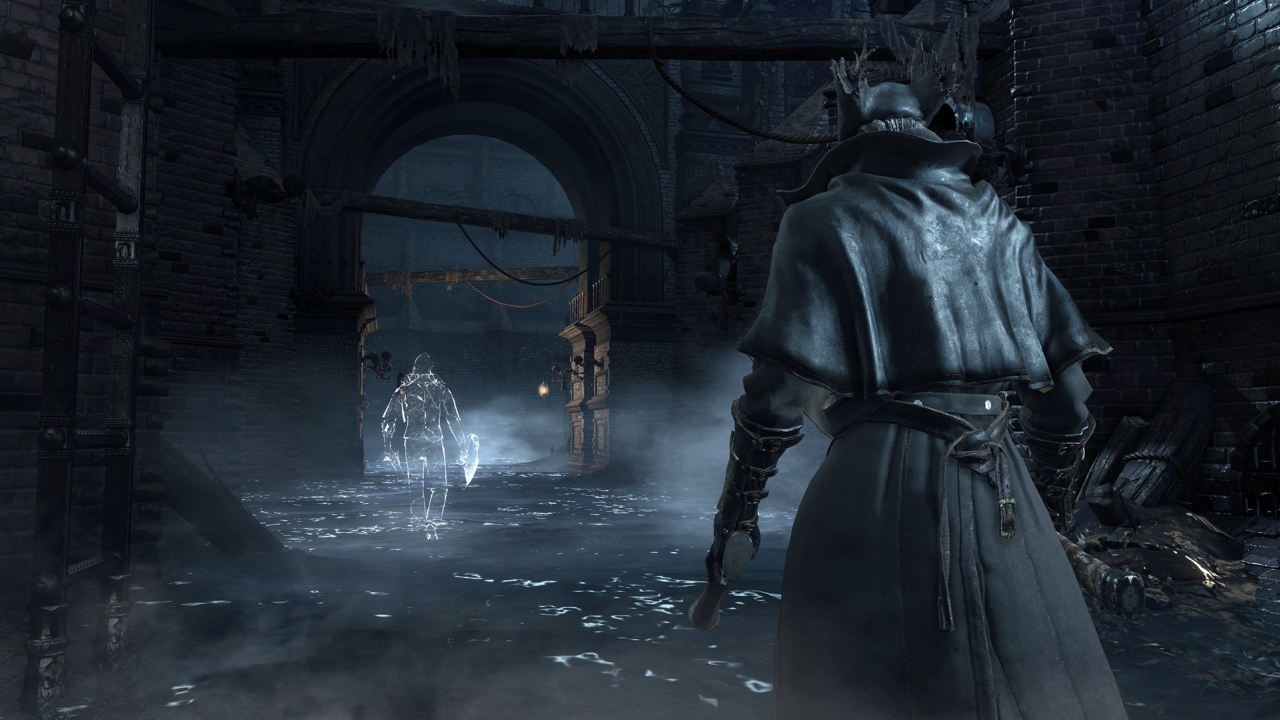
Using Insight to request help does have its drawbacks, as it spawns a Chime Maiden that rings a bell in your game zone. Until you find and defeat her, this bell will attract players who are looking to invade your game and fight you. The competitive multiplayer in Bloodborne underwhelms. Your invaders are invisible to enemies, and will try to pull you into AI foes to improve their odds. Both players can heal themselves until they run out of vials, which makes for some prolonged encounters. If you do happen to find and defeat the Chime Maiden, she doesn’t re-appear until you’ve used a bunch more Insight, so you won’t be invaded often.
It’s odd that by this point in the franchise, there is still no dedicated competitive play mode. And even the cooperative mode doesn’t always work well. Finding a partner (even with the search criteria set to worldwide) takes on average 5 to 10 minutes, sometimes longer. When you finally connect, the framerate can take a hit– not ideal for dangerous and difficult boss encounters. Also, the game sometimes matches players poorly – you could get summoned to a game where the player is already on NG+ and so the boss you’re about to encounter is miles tougher than you can handle. Overall, the multiplayer aspects of Bloodborne are intriguing, but they only function on a basic level and it’s the same sort of asymmetric design that we’ve seen in the Souls games before it.
There is an option to play offline. This way you won’t be able to utilize co-op, but won’t be bothered by invasions either. Further, you’ll miss out on the notes left by other players all across the game world, warning you of ambushes, or helping you discover shortcuts. The notes are actually helpful more often than not, and occasionally entertaining. Other marks on the ground are Specters, that document the last living moments of other Hunters that have met their doom nearby. It’s interesting to see where and how other players have met their untimely end, and perhaps avoid it yourself. Further, users can see ghosts of other players in their game, which is often jarring.
Multiplayer used to be one of the key reasons to keep playing after you’ve beaten the game, but in Bloodborne, there is a New Game + and ++ options to carry on your adventure. Disappointingly, no big changes take place in the game world; enemies grow stronger, and you gain access to some new weapons and armor sets. But beyond that, the experience is mostly the same. So perhaps instead of playing through the game again, you’ll want to check out Chalice Dungeons. These procedurally generated levels are summoned by players themselves, and create a random set of dungeons to explore that contain bosses. There are different tiers or “depths” indicating their difficulty. These tiers do not scale, so players will be able to easily get through the first two or three (out of five) tiers if they’ve already beat the main game and have the best gear. The dungeons can be played cooperatively of course, and you’ll need help against the tough bosses at the lowest levels. It’s worth noting that the bosses appearing in the Chalice Dungeons are sometimes unique and don’t appear in the main game.
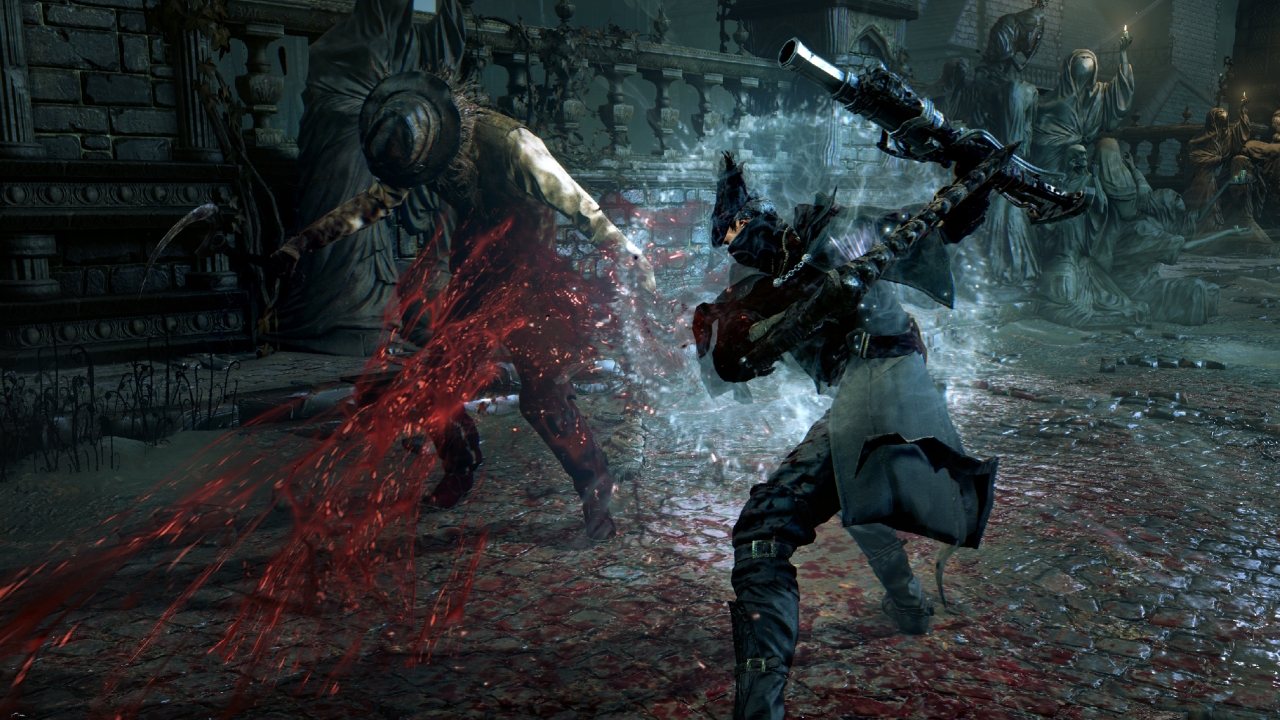
Having described many of the reasons why Bloodborne shines, we must now delve into the negatives. Difficulty, and the lack of “hand holding” as some players describe it, has continued to be a major selling point for the Souls games, and Bloodborne is no different as has been mentioned. But such design philosophy sometimes impacts the experience negatively. For a game that’s difficult to play, it shouldn’t be so difficult to understand. It starts even with the basics – whatever few tutorial messages that exist are scattered across the floor, as if with disgust, so chances are some players won’t see them all and may therefore lack crucial information.
There is no world map, no quests, no markers or direction. It works against some of the effort that the developers have put in. The few NPCs you meet actually have quests, but the dialog is so cryptic that most will never be completed unless players go out and seek help online just to see what needs to be done. Some zones and bosses in the game world are optional, and meant to be tackled at a much later point in the game, but they aren’t identified any differently. So some players may run into an incredibly frustrating boss that is actually optional, but it might put them off from playing the game. Or you might be unable to use runes because you missed the optional boss that unlocks this ability. Players might miss a zone because they bypassed the small doorway that leads there; the game will make no mention of its existence or way to reach it. Without consulting with guides or looking online, it’s entirely possible some players won’t get the full Bloodborne experience, or worse, their adventures might be much more frustrating than they should be.
This is all part of the From Software experience, sure, but introducing some optional features to make the game just a tiny bit less withholding of information would go a long way to recruiting new fans. And there will be many hopefuls, with their shiny new PS4 roaring to go. Including some kind of optional journal to identify quests or a way to guide new players would have been welcome. Again, optional and off by default – please don’t send us angry emails for suggesting that the next game should be dumbed down.
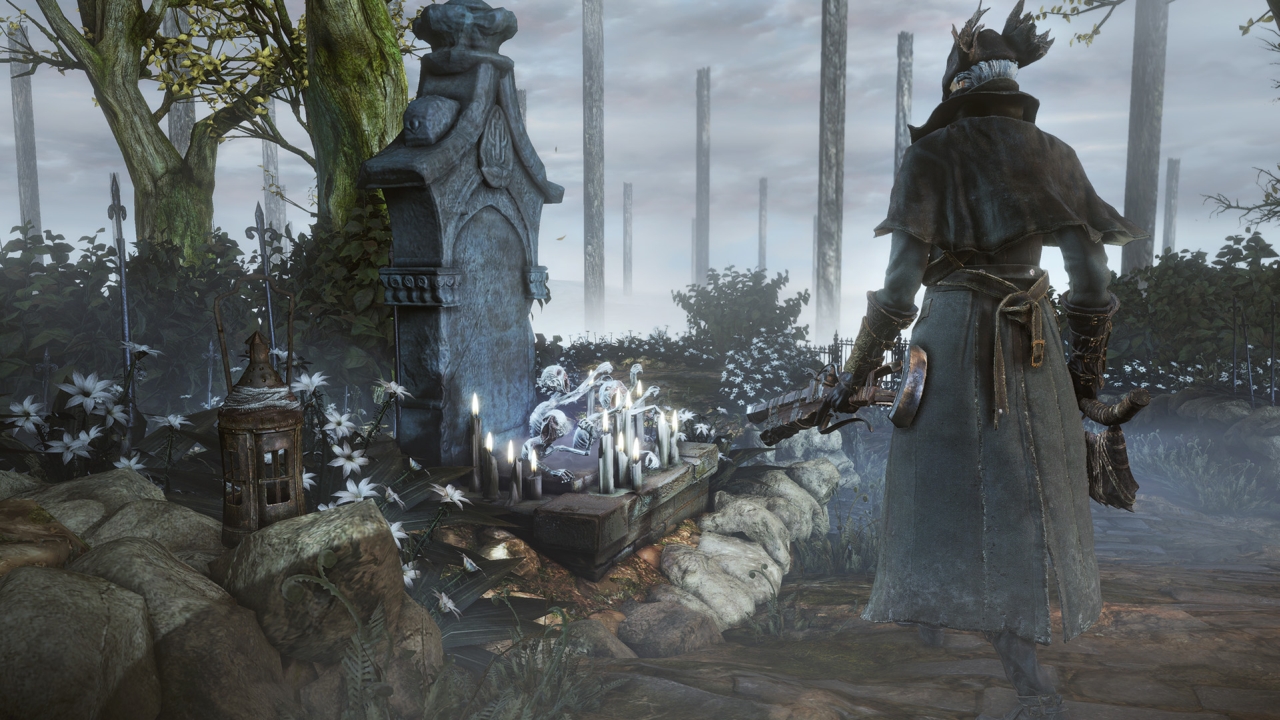
The incredible atmosphere of the game has already been alluded to, and it’s supported by sharp visuals and a steady framerate. It’s not exactly a technical masterpiece, but Bloodborne looks good and sounds even better. Most of the game is silent, save for boss battles, where the orchestral soundtrack adds to the already incredibly high tension. Audio effects during combat bring further satisfaction to landing blows. The only technical misstep here is the loading times. Anytime you fast travel or die, you will be faced with a very long loading screen – over 30 seconds in some instances. It’s not ideal for a game where you’re supposed to die a lot. Until it’s patched, though, think of it as a time to reflect on your failures and find peace. Understand why you died, and what can be done better on your next attempt.
The key to the Bloodborne experience lies in the first few hours. If you can get through the starting zone and defeat the first two bosses, you’ll find that the game finally “clicks”. In that moment, you will be consumed by the atmosphere, the addicting gameplay, and the endless cycle of frustration, joy, and tense combat. Experienced Souls players will find Bloodborne to be something new, with a much more aggressive play style and a fresh start for the franchise. Newcomers that love the equivalent of “don’t get hit” challenge modes in other action games will also be off to a strong start here. If you’re completely new or only tried the Souls games briefly, Bloodborne brings enough new elements to the table to warrant a look. If you get through the first few hours and get a sudden urge to push onwards (that’s the big decision point for recommending the game), you might just get it. You’ll understand why some gamers love this franchise, and why you should join their ranks. Once you’re hooked, there is no going back. It’s the game you’ll be thinking about all day when you’re not playing it, looking up guides and tips, and generally planning your sessions ahead of time. And that’s not something that happens very often. Enter Yharnam at your own peril, for there is nothing that can save you now.
